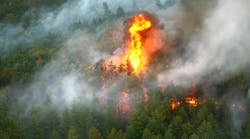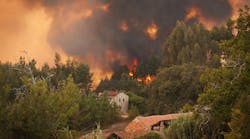First, let's examine what is generally used for a basis of inter-utility comparisons. In the field of VM, the commonly used measures are dollars per mile and dollars per customer. Measures of dollars spent on VM per mile of line or per customer may have meaning within the context of a specific utility over time, but are meaningless as a basis of comparison among utilities. It should be obvious that gauging performance or efficiency on dollars per mile results in utilities that grossly underfund VM emerging as very efficient and thereby, utilities to be emulated. This metric provides no insight to distinguish between efficiency and underfunding. It does not capture the public, nor regulator perception about the adequacy of the level of service provided. That is, there is no connection to the resulting reliability. A top-down driven approach to achieve the lowest dollar per customer or $/mi of line results in a disconnect from the biologically driven need and facts. It leads to underfunding VM, based on a refusal to accept tree growth and mortality rates as independent variables outside the control of the utility. Under-funding VM, as was shown in Vegetation Management Concepts and Principles, is financially imprudent.
The survey may ask whether VM work is contracted out or performed by in-house labor. It may ask whether the utility uses time and materials, cost plus, unit price or lump sum contracts. Generally, there is nothing to help the reader of the benchmarking study determine the merits of these practices beyond their prevalence amongst utilities. There should be no comfort in using the most prevalent practices as that fact alone is no assurance that these practices are the most cost-effective or that they provide superior reliability or customer satisfaction.
Benchmarking participants may be asked to provide unit prices. First, without defining the unit there is no assurance that the price is based on a common denominator. Secondly, is it known whether the unit prices are standardized to include all loading such as time for travel, safety tailboards, disposing of wood wastes, etc.? Thirdly, what are the differences in local labor rates between participating utilities and what is their impact on the unit price?
Another common metric upon which utilities are compared is the length of the pruning cycle. Without a common definition of a maintenance cycle such comparisons are meaningless. Further, outside of the utility arborist profession, there is a commonly held belief that shorter maintenance cycles will have a substantial effect on the extent of major storm damage. Managing Tree-Caused Electric Service Interruptions presents the facts to dispel this erroneous belief.
For the purpose of comparisons, utilities need to be matched on customer density per mile of line and in examining VM, on tree density or trees per mile of line. This includes both trees within the right of way and trees outside the right of way that are capable of interfering with electrical service on failure (danger trees or in the new ANSI terminology, risk trees). As trees outside the right of way account for 85% or more of tree-related outages, clearly this measure of exposure is required. Yet, at this writing very few utilities have quantified this exposure.
It is inappropriate to compare a utility with 12,000 miles of line and 20 million customers to a utility with 50,000 miles of line and 5 million customers. It should be a foregone conclusion that the second utility, if in similar environmental conditions, will spend far more maintenance dollars per customer. Nor is it appropriate to compare a utility averaging 1600 trees per mile with one that averages 800. While not inconceivable it is, however, unlikely that one could compare the efficiency of the VM programs. It might be assumed that the first utility, having twice the tree exposure, will have twice the VM program costs and twice the number of tree-related interruptions. This assumption would, however, be wrong. The relationship between tree exposure and outage incidents is a logistic function. It is not linear (1, 2, 3). As detailed in section Vegetation Management Concepts and Principles, VM workload can also be described by a logistic function or curve. Given this, it would require advanced statistical analysis to make the two utilities comparable.

